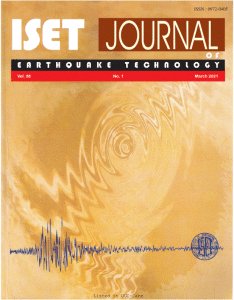Home > Issues & Journals
Indian Seismic Codes on Bridges: Challenges and Issues for Development
S.K. Thakkar
Paper No.: 554
|
Vol.: 57
|
No.: 2
|
June, 2020
|
pp. 79-85

Abstract
The development of seismic codes of bridges in a country is a continuous process which is carried out on a regular basis because of advancement of knowledge with the Research and Development and experience gained in performance of bridges in recent earthquakes. The various countries often have more than one seismic code on bridges for example one applicable to Highway Bridges and other to Railway Bridges. There has been significant advancement in seismic design procedures in recent years starting from working stress design, ultimate load design, limit state design following force as basis of design and now performance based design following displacement as the basis of design. The performance based design is yet to find a place in seismic codes in India. The reasons for improvements in design procedures have been to counter the deficiencies in existing design methods and achieve performance objectives for design earthquakes as best as possible. Two significant developments in seismic design can be identified (i) consideration of inelastic behavior and ductility in seismic design, and (ii) incorporation of the capacity design concept in seismic design which has led to achieve ductile behavior, avoid brittle failure modes and prevent collapse of structures. These concepts have now found a place in seismic codes on bridges worldwide. India has three seismic codes on bridges; IS: 1893 (Part 3): [1], RDSO Guidelines [2] and IRC Guidelines [3]. This paper presents an overview of seismic codes of bridges and challenges in the development of the codes that include: lessons learnt from past earthquakes, updating of existing analysis and design methods, highlighting important features of different seismic bridge codes, critical views on codes and issues for future developments.
Keywords: Seismic Codes, Bridges, Seismic Design, Inelastic Behavior, Capacity Design, Seismic Analysis
©2025. ISET. All Rights Reserved.